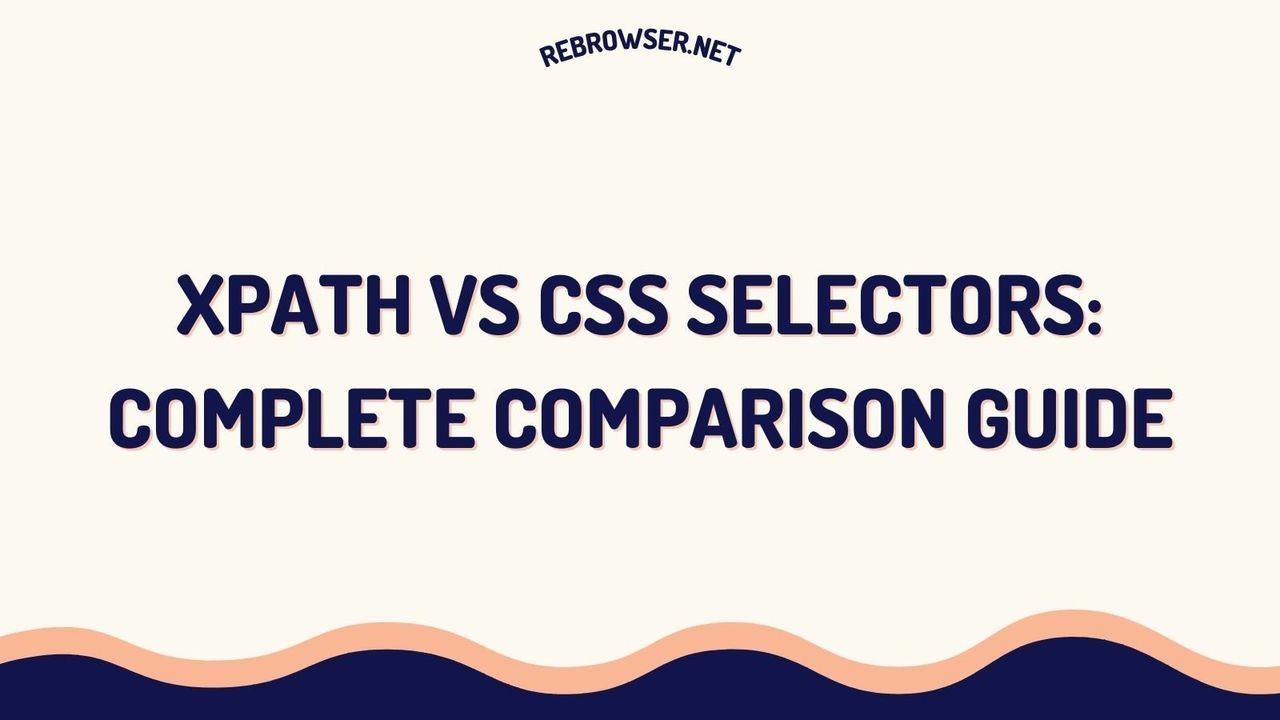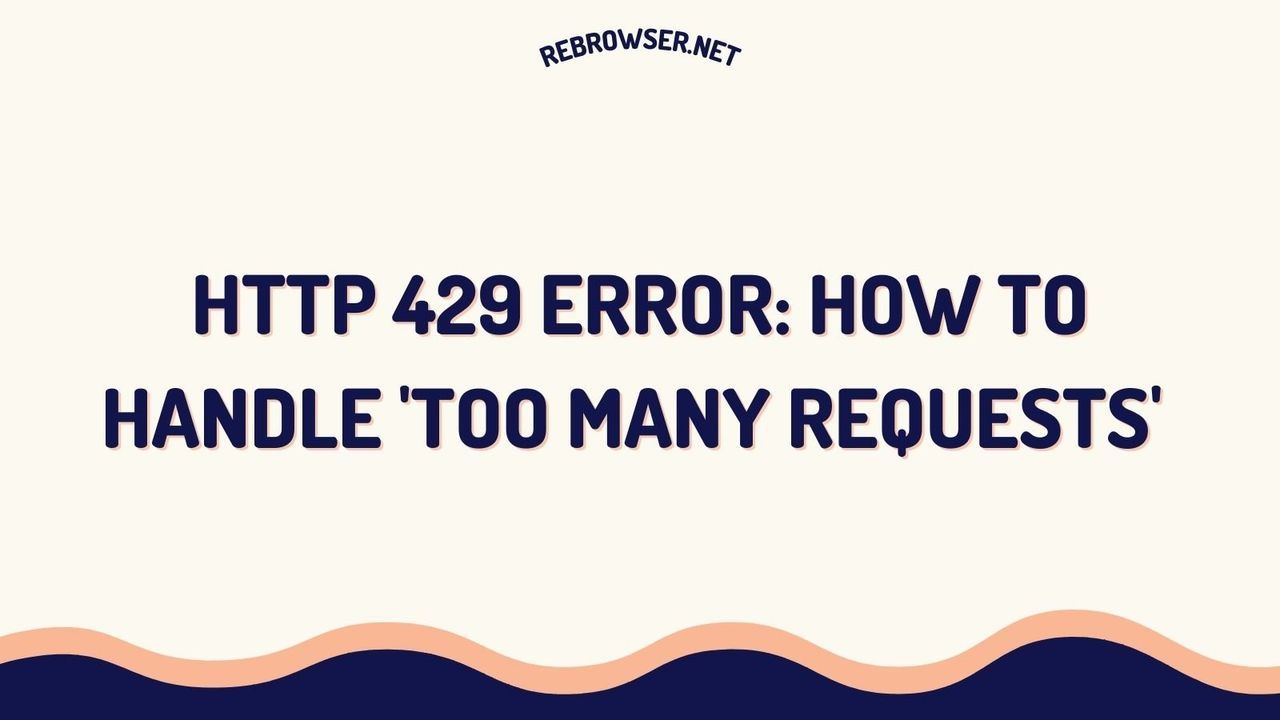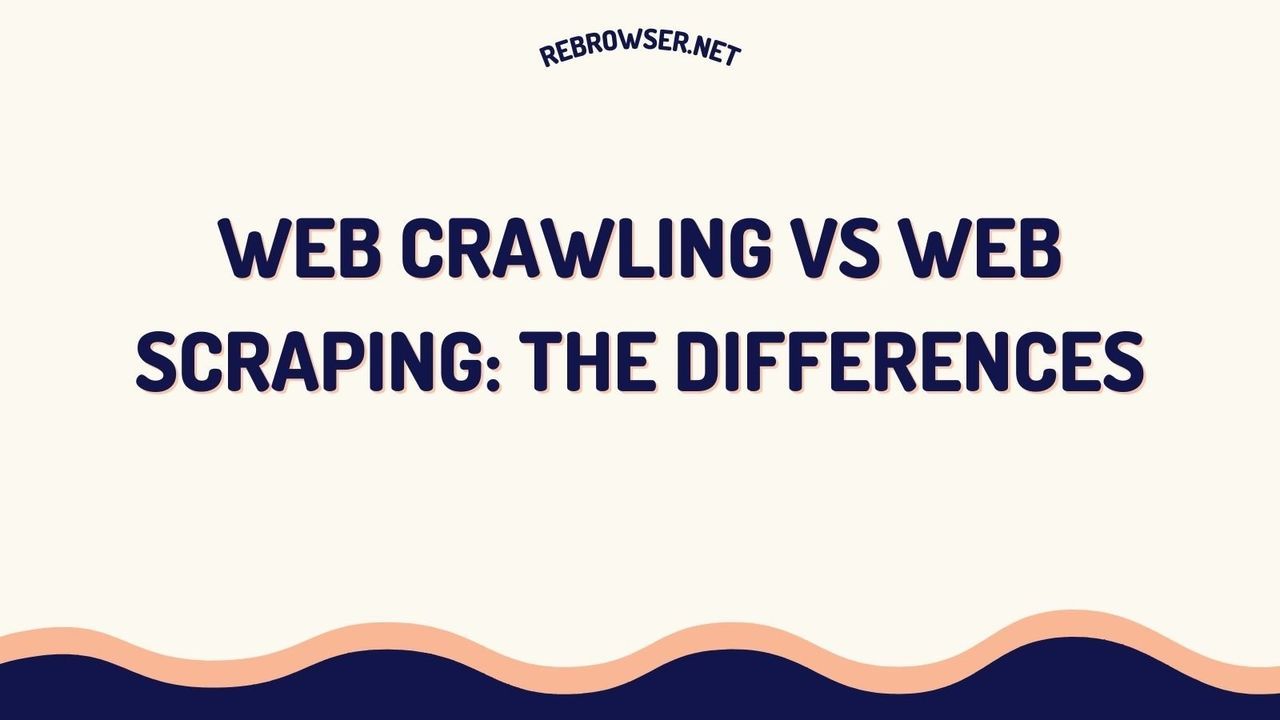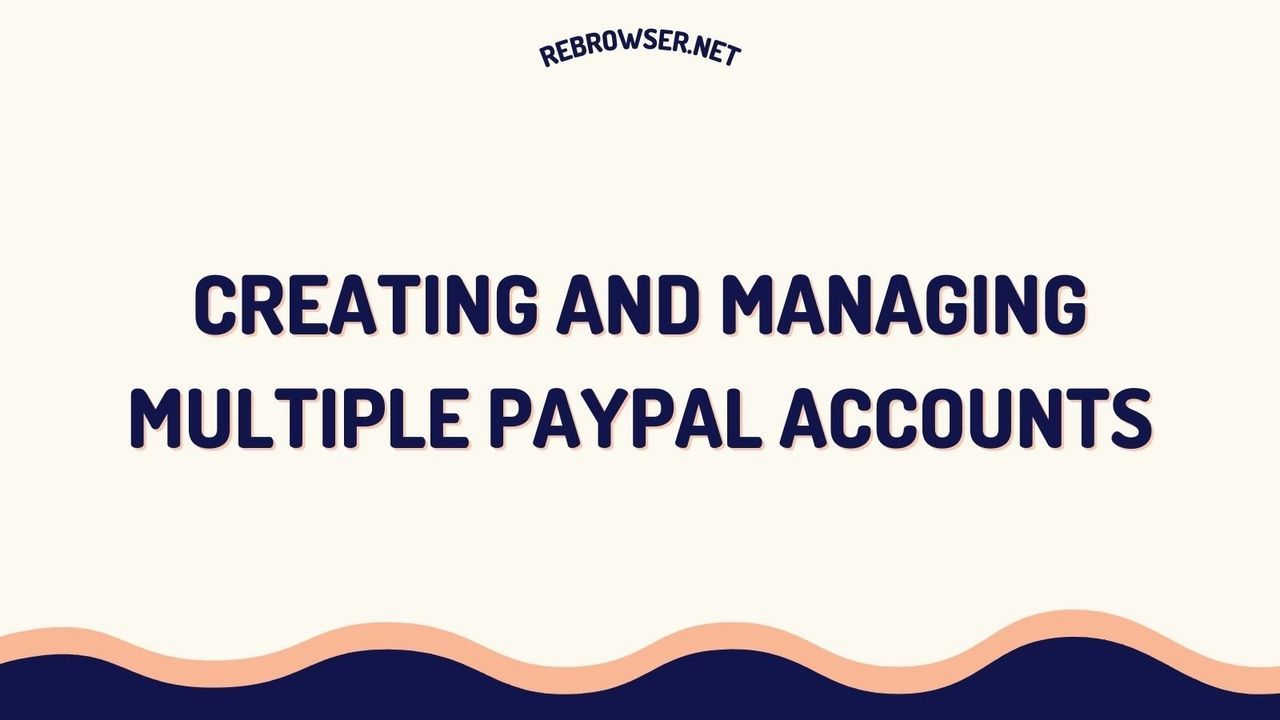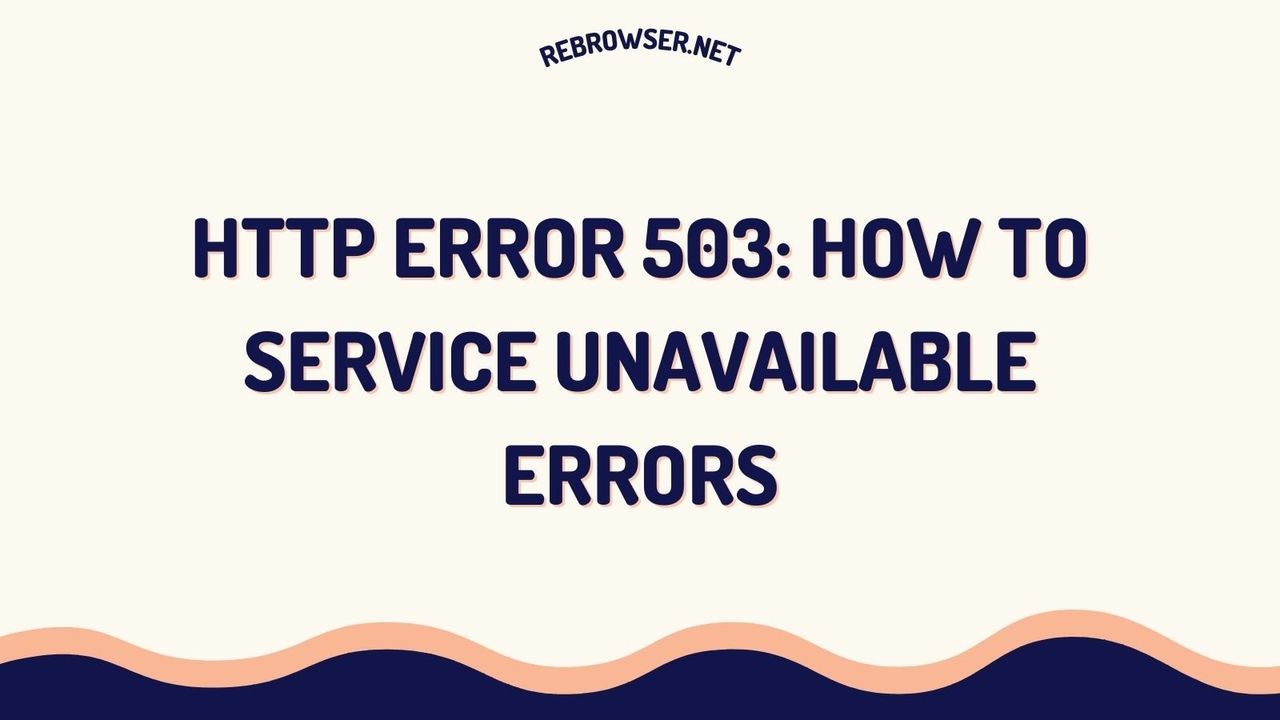C# Web Scraping Mastery: Design Robust Scrapers Using Modern Tools & Best Practices for 2025
Key Takeaways
- C# offers robust web scraping capabilities through libraries like Html Agility Pack, Selenium, and Puppeteer Sharp, each suited for different scenarios from basic HTML parsing to complex JavaScript rendering
- Modern web scraping requires handling both static and dynamic content, with proper error handling, rate limiting, and proxy support for production-grade applications
- Understanding the tradeoffs between different approaches (HTTP clients vs browser automation) is crucial for building efficient scrapers
- Incorporating best practices like respecting robots.txt, implementing retry mechanisms, and proper error handling is essential for reliable scraping
- The web scraping landscape continues to evolve with new challenges like anti-bot measures and dynamic content requiring sophisticated solutions
Introduction
Web scraping has become an essential skill for modern developers, enabling data collection from websites for analysis, monitoring, and integration purposes. C# stands out as an excellent choice for web scraping projects, offering a mature ecosystem of libraries and tools backed by robust performance and extensive community support.
According to recent statistics from the .NET Foundation, over 65% of enterprise developers use C# for automation tasks, including web scraping. This guide will walk you through building production-ready web scrapers using C#, covering everything from basic HTML parsing to handling complex JavaScript-rendered content.
Choosing the Right Tools for Your Scraping Project
Popular C# Scraping Libraries in 2025
| Library | Best For | Key Features |
|---|---|---|
| Html Agility Pack | Static HTML parsing | XPath support, CSS selectors, HTML parsing |
| Selenium WebDriver | Browser automation | JavaScript execution, interactive elements |
| Puppeteer Sharp | Modern web applications | Headless Chrome, async/await, performance |
Decision Framework for Choosing Tools
Consider these factors when selecting your scraping tools:
- Target Website Architecture: Static HTML vs JavaScript-heavy sites
- Performance Requirements: Speed vs resource usage
- Scale: Single page vs multi-page scraping
- Authentication Needs: Simple vs complex login flows
When it comes to choosing the right tool for your scraping needs, consider exploring our detailed comparison of popular web scraping tools to make an informed decision based on your specific requirements.
Basic Web Scraping with Html Agility Pack

Setting Up Your Project
dotnet new console -n WebScraperDemo cd WebScraperDemo dotnet add package HtmlAgilityPack dotnet add package CsvHelper # For data export
Creating a Basic Scraper
using HtmlAgilityPack;
using System.Threading.Tasks;
public class WebScraper
{
private readonly HtmlWeb _web;
public WebScraper()
{
_web = new HtmlWeb();
}
public async Task LoadPageAsync(string url)
{
return await _web.LoadFromWebAsync(url);
}
public IEnumerable ExtractData(HtmlDocument doc, string xpath)
{
var nodes = doc.DocumentNode.SelectNodes(xpath);
return nodes?.Select(n => n.InnerText.Trim()) ?? Enumerable.Empty();
}
}
Advanced Scraping Techniques
Handling Dynamic Content with Selenium

using OpenQA.Selenium;
using OpenQA.Selenium.Chrome;
public class DynamicScraper
{
private IWebDriver _driver;
public DynamicScraper()
{
var options = new ChromeOptions();
options.AddArgument("--headless");
_driver = new ChromeDriver(options);
}
public async Task WaitForDynamicContent(string selector, int timeoutSeconds = 10)
{
var wait = new WebDriverWait(_driver, TimeSpan.FromSeconds(timeoutSeconds));
await Task.Run(() => wait.Until(d => d.FindElement(By.CssSelector(selector))));
}
}
Rate Limiting and Politeness
Implementing proper rate limiting is crucial for responsible scraping:
public class RateLimitedScraper
{
private readonly SemaphoreSlim _throttle;
private readonly TimeSpan _delay;
public RateLimitedScraper(int requestsPerSecond)
{
_throttle = new SemaphoreSlim(1);
_delay = TimeSpan.FromMilliseconds(1000 / requestsPerSecond);
}
public async Task GetPageAsync(string url)
{
await _throttle.WaitAsync();
try
{
using var client = new HttpClient();
var response = await client.GetStringAsync(url);
await Task.Delay(_delay);
return response;
}
finally
{
_throttle.Release();
}
}
}
Error Handling and Resilience
Implementing Retry Logic
public async Task WithRetry(Func> action, int maxAttempts = 3)
{
for (int i = 1; i <= maxAttempts; i++)
{
try
{
return await action();
}
catch (Exception ex) when (i < maxAttempts)
{
await Task.Delay(TimeSpan.FromSeconds(Math.Pow(2, i)));
continue;
}
}
throw new Exception($"Failed after {maxAttempts} attempts");
}
Best Practices and Optimization
Memory Management
When scraping large datasets, memory management becomes crucial. Here's a pattern for processing data in chunks:
public async IAsyncEnumerable StreamResults(
IEnumerable urls,
Func> processor)
{
foreach (var url in urls)
{
using var scope = new MemoryScope(); // Custom scope for cleanup
var result = await processor(url);
yield return result;
}
}
Performance Optimization Tips
- Use async/await consistently for I/O operations
- Implement connection pooling for multiple requests
- Consider parallel processing with TPL for bulk scraping
- Cache parsed documents when processing multiple elements
Real-World Example: Building a Product Monitor
Let's create a practical example of monitoring product prices across multiple e-commerce sites:
public class ProductMonitor
{
private readonly Dictionary> _parsers;
public ProductMonitor()
{
_parsers = new Dictionary>
{
["amazon"] = ParseAmazonProduct,
["bestbuy"] = ParseBestBuyProduct
};
}
public async Task MonitorProduct(string url)
{
var domain = new Uri(url).Host;
var parser = _parsers[domain];
var doc = await LoadPageWithRetry(url);
return parser(doc.DocumentNode);
}
private Product ParseAmazonProduct(HtmlNode node)
{
return new Product
{
Title = node.SelectSingleNode("//h1[@id='title']")?.InnerText,
Price = ParsePrice(node.SelectSingleNode("//span[@id='price']")?.InnerText),
Available = node.SelectSingleNode("//div[@id='availability']")
?.InnerText.Contains("In Stock")
};
}
}
Future Trends in Web Scraping
As we look ahead to 2025 and beyond, several trends are shaping the future of web scraping:
Emerging Challenges
- AI-Powered Anti-Bot Systems: Websites are increasingly using machine learning to detect and block automated access
- Complex JavaScript Frameworks: Modern web apps are becoming more sophisticated with frameworks like Next.js and Remix
- Privacy Regulations: GDPR and similar regulations impact how data can be collected and stored
Solutions and Adaptations
- Browser Fingerprinting: Implementing sophisticated browser fingerprint rotation
- Hybrid Approaches: Combining multiple scraping techniques for resilience
- Ethical Scraping: Following robots.txt and implementing proper rate limiting
From the Field: Developer Perspectives on Web Scraping
Technical discussions across various platforms reveal a nuanced debate about approaches to web scraping in C#, particularly when dealing with modern web applications. While some developers advocate for traditional tools like HtmlAgilityPack for its simplicity and efficiency with static content, others emphasize the growing need for more sophisticated solutions like Selenium and Puppeteer Sharp to handle JavaScript-heavy sites.
Authentication emerges as a significant challenge in real-world implementations. Senior engineers frequently point out that modern security measures like 2FA can complicate automated scraping approaches. Some teams have found success using hybrid solutions - combining headless browsers for authentication flows with lighter-weight tools for subsequent data extraction. Others recommend investigating whether the target platform offers alternative data access methods like APIs or export functionality before investing in complex scraping solutions.
Legal and ethical considerations feature prominently in community discussions. Experienced developers consistently emphasize the importance of reviewing Terms of Service and respecting rate limits before implementing any scraping solution. Many recommend looking for official APIs first, as demonstrated by one developer who discovered a public API after initially planning to scrape a chemical database website. This approach not only ensures compliance but often provides more reliable and maintainable solutions.
The choice between GUI-based tools and console applications represents another key decision point. While some developers prefer GUI applications for handling interactive elements like 2FA prompts, others advocate for headless browser automation tools that can be integrated into automated workflows and scheduled tasks. Tools like Puppeteer Sharp have gained popularity for offering a middle ground - providing browser automation capabilities while still supporting both headless and headed modes for different scenarios.
Technical teams have also shared valuable insights about parsing strategies. While some developers prefer XPath for its precision, others advocate for more modern approaches using CSS selectors through tools like AngleSharp. For a deeper understanding of these approaches, you can explore our comprehensive guide on XPath vs CSS selectors. The community generally agrees that robust error handling and validation are crucial regardless of the chosen method, as web page structures can change unexpectedly.
Conclusion
Web scraping with C# offers a powerful toolkit for collecting and processing web data. By following the practices and patterns outlined in this guide, you can build robust, maintainable scrapers that handle modern web challenges effectively.
Remember to always respect website terms of service, implement proper rate limiting, and handle errors gracefully. As the web continues to evolve, staying updated with the latest scraping techniques and tools will be crucial for success.
